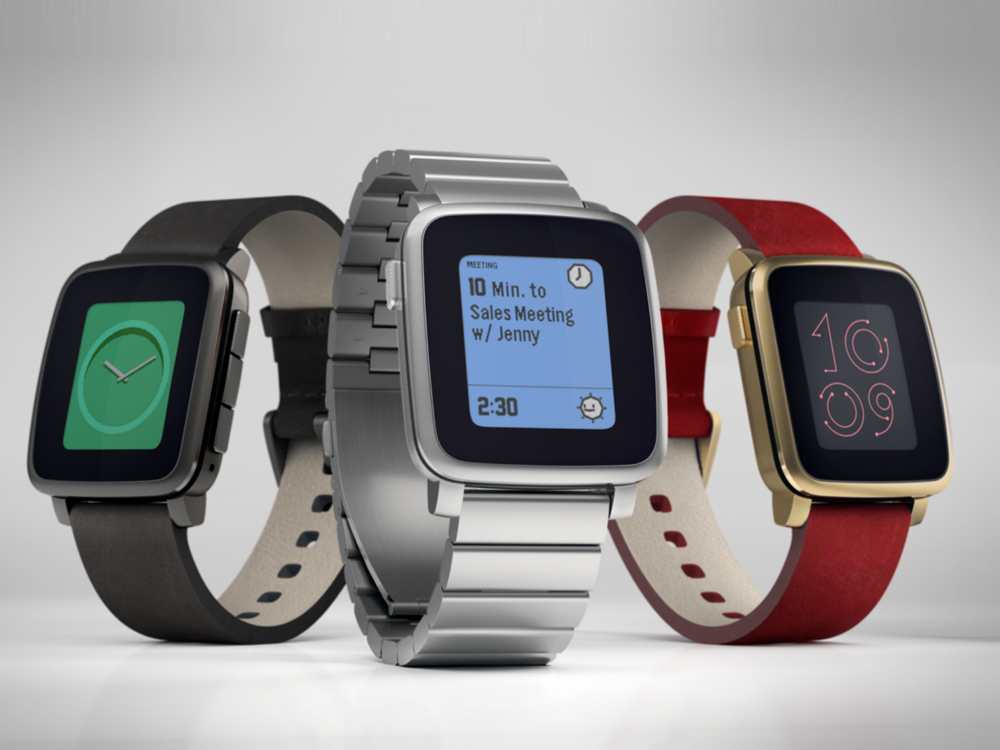Kickstarter and Public Benefit — Can for-profit crowdfunding really support non-profit goals?
Big news from this weekend: Kickstarter has decided to become a “public benefit corporation.”
Benefit Corporations, like L3Cs and other new “not-just-for-profit” entities, allow a company to declare the importance of its social mission alongside its commercial ambitions. They have become fashionable in the past decade, in part because a public commitment to mission can inspire loyalty and trust among customers and employees alike.
Kickstarter has always emphasized that it cares about fostering creativity and making the world a better place, and I applaud them for so firmly planting the mission flag. I wish more businesses would recognize that doing good and making money are not only compatible, but can even be complimentary, mutually-reinforcing objectives.
Before we get too carried away, though, we should be clear about two things:
- Very little has actually changed.
- Kickstarter is still designed and built (rather brilliantly, in fact) to support commercial projects.
Let’s take the first point first. I say that very little has changed not (just) because I’m a grumpy old stick in the mud. I’ve spoken on the topic of hybrid business models at numerous conferences and grad schools in recent years, and I invariably get asked the following questions:
Is a Benefit Corporation/L3C/B-Corp a new kind of charity? No, it’s still a for-profit business with shareholders who expect a return on their investment.
But they can accept tax-deductible donations, right? Nope, the IRS only allows tax deductions for donations to federally recognized charities.
Oh. So they can only get grants from foundations, then? Nope, they can’t get those either.
Huh. But they get a break on their taxes, right? Sorry, no. They still have to pay taxes like any other for-profit business.
But something has to be different, right? Sure. There are some minor new reporting requirements, but nothing remotely like what’s required of charities. Also, it would be slightly tougher for an investor to sue if the managers sacrificed some profit in the interest of doing good in the world.
So what’s the point? Well, I guess it’s about signaling. They’re trying to turn a potential limitation (we’re not always going to do everything we can to make as much money as possible) into an asset (but maybe people will like us for that and it’ll all come out in the wash.)
There’s absolutely nothing wrong with becoming a Benefit Corporation, and in truth there are many things to admire about it. But the expectation embedded in those questions is that these new entities are some kind of upgraded version of a non-profit organization (New and improved! Now comes with profit!), or that all mission-oriented businesses are created equal. Aside from being factually confused, this notion serves to undermine the work of actual non-profit organizations.
The distinction between non-profit and for-profit work may be increasingly blurry, but it’s not meaningless. Becoming a Benefit Corporation doesn’t change a company’s DNA. In the case of Kickstarter, when you get past the hype, that DNA is about raising capital for commercial ventures.
The notion that benefit corporations are some kind of
upgraded version of non-profits is factually confused and
undermines the work of actual non-profit organizations.
At Fractured Atlas, where we’ve raised nearly $90 million for our member artists over the past 13 years, we think about the balance between mission and money all the time. We charge for our services because that market feedback helps demonstrate value and keeps us focused on addressing practical needs. However, we routinely make decisions that are against our financial interests but that advance our goals of leveling the arts and culture playing field and providing a platform for diverse, underrepresented voices. We do that because our DNA is that of a mission-driven non-profit.
To put it another way: Fractured Atlas is a non-profit that acts in some ways like a for-profit, because it supports our mission to do so. Kickstarter, meanwhile, is a for-profit that acts in some ways like a non-profit, at least partly because it is profitable to do so.
This may seem like a small or semantic difference, but it’s important because it’s reflected in how we’ve built our respective fundraising platforms.
Of the top 20 most funded Kickstarter campaigns, one was for a feature film based on a popular TV show, and one was a charitable fundraising campaign for a non-commercial project. The other 18 were for commercial products that were financed through conditional pre-sales on Kickstarter.

The Pebble Watch is undeniably cool. That’s why they raised $20,338,986 on Kickstarter. But what does this have to do with charity? (Photo from the Kickstarter campaign page.)
The dominance of this last category should come as no surprise, because Kickstarter is an exceptionally good platform for doing exactly that. It allows you to test the market for a new product while simultaneously ensuring that, if such a market exists, the capital to bring the product to fruition will be there as well. Many “backers” even treat Kickstarter as an online shopping site for early adopters. In a few weeks, Fractured Atlas itself will be running a Kickstarter campaign to test the market for a new product called Make Time Clock. We chose Kickstarter for this task because it is unquestionably the best tool out there for this use case.
By contrast, only one of those top 20 blockbuster campaigns was charitable in nature. Granted, that doesn’t necessarily mean that lots of independent artists aren’t raising money on the site. How about we look at some less commercial categories to see how they’ve done? Like dance. Surely with the hundreds of millions of dollars that Kickstarter projects have raised over the years, at least a few lottery winners must have been dance-related.
Actually, the most-funded dance campaign in Kickstarter’s history was for The Muse, a circus-based performance and training space in Brooklyn, and it raised $61,360.

Move the Muse Brooklyn — Circus raised $61,360 on Kickstarter. It’s the most-funded dance campaign ever on the site. (Photo from the Kickstarter campaign page.)
Now don’t get me wrong. Sixty-one grand is not chump change, and I’m happy that this worthy organization was able to raise it. Still, it’s a tiny fraction of the eye-popping numbers raised by projects like the Pebble Watch ($20,338,986) or the COOLEST cooler ($13,285,226). One has to wonder whether Kickstarter is structured in a way that disadvantages non-commercial work that doesn’t result in a hot new product.
To test this hypothesis, we can examine the top dance fundraisers in Fractured Atlas’s fiscal sponsorship program. For privacy reasons we don’t publicly reveal the exact amounts raised by individual sponsees, but I can give you some anonymous stats. The most-funded dance project in Fractured Atlas’s program has raised $947,345 and counting. And while that project is admittedly an outlier, I can point to 28 different dance projects that have each raised more than $61,360.
An astonishing $2 billion has been pledged to support projects on Kickstarter. So why is it that in a strongly non-commercial category like dance, without cool new gadgets to sell, our artists are experiencing so much more success than those who rely on Kickstarter?
I can suggest three main reasons:
- Fractured Atlas treats crowdfunding as a specific fundraising tactic, not a complete fundraising strategy. While our sponsored artists are able to launch crowdfunding campaigns on our site as well as on Indiegogo and Rockethub, these campaigns are just one channel. They may be vital parts of a comprehensive fundraising effort, but if that’s all you do then you’re ignoring grants, individual philanthropists, annual campaigns and the like. That’s a ton of money left on the table.
- Donating to a worthy organization is not the same as buying a watch, and it shouldn’t be treated the same. Kickstarter’s heavy emphasis on “rewards” encourages a highly transactional relationship with one’s “backers”. When you just want someone to buy your product and you never expect to see or hear from them again, then that’s perfectly fine. But charitable fundraising is about building relationships based on trust and mutual respect. Cultivating meaningful relationships takes time, and it almost never happens when you’re entirely focused on grabbing that first gift. That’s why we encourage our members to view each patron as a complete individual and to consider the entire context of that relationship over time, and we provide them with tools to do so. This is Fundraising 101, but it’s not how popular crowdfunding sites work.
- Commercial crowdfunding sites like Kickstarter make most of their money and generate all of their buzz through a tiny minority of blockbuster projects. It’s no wonder, therefore, that they place a tremendous emphasis on elevating the visibility of those blockbusters, featuring them on their home pages and in media coverage. The result is a winner-take-all model that amplifies existing inequities, rather than a platform for elevating important work that might not otherwise get a hearing. At Fractured Atlas, we spend about 80% of our time on the phone and in the community with artists who might only ever raise a few thousand dollars. Our mission is about eliminating barriers and leveling the playing field, so this is an essential part of that. But since we cover our expenses by a percentage fee on funds raised, devoting so much energy to these smaller projects is not in our financial interest.
An emphasis on blockbusters results in a
winner-take-all model that amplifies existing inequities.
In each of these three respects, Fractured Atlas could theoretically choose to follow Kickstarter’s path. Accepting a credit card donation online is cheap; helping someone craft a proposal to the National Endowment for the Humanities is expensive. Giving people a plug-n-play fundraising tool that makes it all feel easy is great for Kickstarter’s business; teaching people how to craft comprehensive fundraising strategies that are built for the long-term is less lucrative but has a more lasting impact for the artist. And while we obviously could make a lot more money by focusing our energy and attention on those handful of artists who have huge built-in followings, we’re more interested in empowering important voices that would otherwise go unheard.
In each case, we’ve adopted business practices and policies that reflect our values, even when that means losing money. And that is the difference between being an authentically mission-driven organization, and being a for-profit company with a sincere commitment to corporate social responsibility.
About Adam Huttler
Adam Huttler is the founder and Managing General Partner of Exponential Creativity Ventures. As a six-time founder, his career’s through-line has been about helping mission-driven companies use technology to drive innovative revenue strategies. Adam is best known as the founder of Fractured Atlas, a social enterprise SaaS platform that helps artists and creative businesses thrive.


